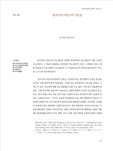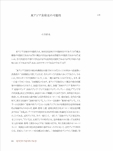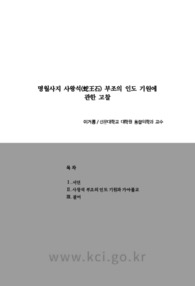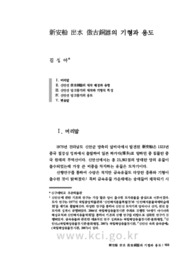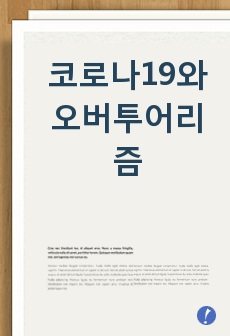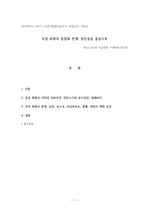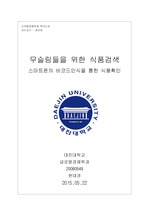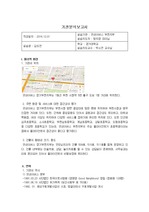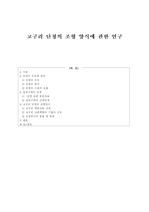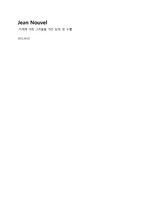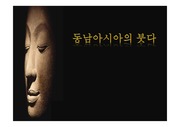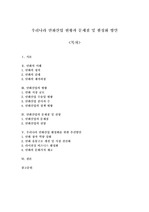

-
 * 본 문서는 배포용으로 복사 및 편집이 불가합니다.
* 본 문서는 배포용으로 복사 및 편집이 불가합니다.
미리보기
서지정보
· 발행기관 : 한국미술연구소
· 수록지 정보 : 美術史論壇 / 30권
· 저자명 : 오가와 히로미쓰
영어초록
This thesis is an attempt to clarify an answer to the fundamental question by Professor Hong, which reads, “Would it be ever possible to facilitate integrative construction of the East Asian Art History?” First of all, while verifying that the terminology “美術(art)” is a word coinage in modern Japanese era related to Europe fine arts or Shöne Kunst, and it has become common terminology among East Asian cultural sphere with Chinese character after the beginning of 20th century, I’d like to consider in what context whether its meaning is clarified as to present common distinctive feature or otherwise identified as different, under the similar cultural zone.
In other words, the common or different features come into being by succeeding or renouncing, or even accepting or transforming the traditional framework of Chinese “書畵(calligraphy and painting)” based on the literati view of calligraphy and painting, and the very modern notion of European “art” which includes all the painting, sculpture, architecture and craft.
In Japan, while “美術” or art as a framework has been accepted, on the other hand “calligraphy and painting” as a framework was abandoned, and “calligraphy” itself was discarded out of the framework of “art”, as witnessed in the Ministry of Education Art Exhibition, the divisions consist of painting, sculpture and craft only. In Taiwan, right from the initial stage when the Taiwan Art Exhibition was established and even after it was transformed into the Government-general of Taiwan Art Exhibition, the categories were divided into only two consistently, which are “East Paintings Division” and “West Paintings Division.” In Korea, the initial concept of the Government-general of Korea which tried to rule out calligraphy out of the Korea Art Exhibition has been modified based on the objection from the Korean committee members and others, resulting in addition of “the 3rd division, Calligraphy” along with “the 1st division, East Paintings” and “the 2nd division, Western Paintings and Sculptures.” Whereas in China, at the West-lake Exposition in 1929, the showpieces of Art Museum included painting, calligraphy, craft, sculpture and architecture, which represents it’s a double attempt to succeed tradition of “calligraphy and painting” and to accept modernization of the “art”. Without taking heed of the meaning difference of “art” depending on the region or the era, the common premises to discuss the East Asian Art History integrally cannot be obtained.
In that context, “the integrative construction of East Asia Art History” which include Korea and China where, different from Japanese “art” framework in which “calligraphy” nor “architecture” fall in, both of them are considered as within the framework of “art”, should be compiled by beginning with describing the summary of each field of painting, sculpture, craft and architecture chronologically in each era for each Japan, China and Korea, by conforming the “history of calligraphy” and “history of architecture” studied separately in Japan, into the “history of art”.
The “integrative construction” in terms of paintings, however, needs to be determined as, different from Europe where the international styles are succeeded and evolved from Romanesque, to Gothic to Renaissance, etc., in case of East Asia where Chinese or Korean dynasty, or Japanese dynasty or shogunate era change impose great impact on stylistic transformation, one cannot apply the method of describing the situation of each country utilizing stylistic transformation evolving as an axis. The possibility lies with, based on the unfolding of Chinese Painting History, by objectively analyzing if Japanese and Korean painting history defining whether Chinese painting left its impact in each area, if the painting history’s development of those three countries are understood spirally, then the result would become nothing but to answer to the question, “Would it be ever possible to facilitate integrative construction of the East Asian Art History?”
More concretely, during the 250 years of Chinese painting history between Yuan dynasty to the middle of Ming dynasty, in which two distinctive international modalities evolved, namely Li-Guo school of Yuan dynasty and Southern Song court style landscape painting of Ming dynasty, along with these development one can review the Chinese painting history unfolding during the period, and study the evolution of landscape painting history in responding Korea’s latter half period of Goryeo to early period of Joseon dynasty, and ending period of Japanese Kamakura era, Nanboku period to the middle of Muromachi by re-examining a few of each existing art pieces, and defining features commonly witnessed in Chinese paintings and also identifying uncommon characteristics.
My thesis, however, does not represent comprehensive and concrete recommendations towards “integrative construction of the East Asian Art History,” responding to Professor Hong’s compelling question. It is necessary to state doggedly that this is a rudimentary stage in which only its possibility has been affirmed. In East Asia where China existed as an unparalleled center, if it is feasible to discover a similar axis to the one which correlates to varied styles which arose another and yet another in various regions in Europe. There is no question that “integrative construction of the East Asian Art History” depends solely on that point.참고자료
· 없음태그
- # 書畵
- # calligraphy and painting
- # 美術
- # Fine Arts
- # 內國勸業博覽會
- # Domestic Industrial Exposition
- # 文部省美術展覽會
- # Ministry of Education Art Exhibition
- # 臺灣美術展覽會
- # Taiwan Art Exhibition
- # 朝鮮美術展覽會
- # Korea Art Exhibition
- # 西湖博覽會
- # West-lake Exposition
- # 元代李郭派
- # Li-Guo school of Yuan dynasty
- # 明代南宋院體山水畵風
- # Southern Song court style landscape painting of Ming dynasty
- # 全國美術展覽會
- # the National Art Exhibition
-
자료후기
Ai 리뷰지식판매자의 자료는 질이 높고, 각 분야의 전문 지식을 바탕으로 한 콘텐츠가 많아 학습하는 재미가 쏠쏠합니다. 앞으로도 많은 유익한 자료를 기대합니다! -
자주묻는질문의 답변을 확인해 주세요

꼭 알아주세요
-
본 학술논문은 (주)코리아스칼라와 각 학회간에 저작권계약이 체결된 것으로 AgentSoft가 제공 하고 있습니다.
본 저작물을 불법적으로 이용시는 법적인 제재가 가해질 수 있습니다. -
해피캠퍼스는 구매자와 판매자 모두가 만족하는 서비스가 되도록 노력하고 있으며, 아래의 4가지 자료환불 조건을 꼭 확인해주시기 바랍니다.
파일오류 중복자료 저작권 없음 설명과 실제 내용 불일치 파일의 다운로드가 제대로 되지 않거나 파일형식에 맞는 프로그램으로 정상 작동하지 않는 경우 다른 자료와 70% 이상 내용이 일치하는 경우 (중복임을 확인할 수 있는 근거 필요함) 인터넷의 다른 사이트, 연구기관, 학교, 서적 등의 자료를 도용한 경우 자료의 설명과 실제 자료의 내용이 일치하지 않는 경우
찾으시던 자료가 아닌가요?
지금 보는 자료와 연관되어 있어요!
문서 초안을 생성해주는 EasyAI
